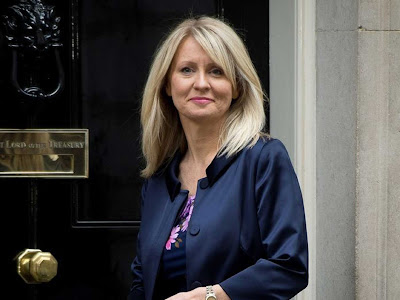The Continuing Struggle with Debt: Focusing on the Real Stories
Here in Financial
Regulation Matters we have looked at the issue of personal debt before,
with posts ranging from the ever-growing
crisis to the predatory
lending that exists within the sector. In today’s post, we will be looking
at the figures that have been released by a blog for Bank of England (BoE)
staff – it is not a usual blog, but a vehicle for BoE staff to openly discuss
certain policies and aspects that affect policies – that describe how the
situation for everyday consumers is a cyclical, almost hopeless process that
many stay trapped in for decades. This analysis will be counteracted by the
news stories that receive plenty of attention in the media, with the aim being
to illustrate how consumer confidence is almost enshrined within the modus
operandi of the system, even in the
face of opposing, and often devastating facts.
The news has been awash recently with stories about
consumers operating more
shrewdly in the credit markets (in relation to switching between better
arrangements with credit cards etc.), or that the amount of credit
consumption actually dropped in December which, according to the news
represents hope in this particular marketplace. Furthermore, HMRC has moved to ban
the use of credit cards for the payment of tax, which is supposedly aimed
at reducing credit dependency. However, there are still many who point to the
remarkable explosion of the credit bubble in the UK alone, with some pointing
at recent figures which suggested that, as according to the Office of National
Statistics, the bubble now stands at £392
billion and counting, with the additional warning that household debt could
go past £20,000 by the end of this current Parliament. It is this type of statistic
that correctly frames the results of a recent study by employees at the BoE –
although not acting in that capacity – which suggests that nearly 90%
of all outstanding credit is held by those who were also in debt two years
earlier; the inference, quite clearly, is that these people are trapped in
the credit cycle, and despite being able to transfer balances remain within the
cycle.
The media was quick to pick up on the fact that of those in
debt, the spike is not down to excessively risky borrowers – i.e. ‘sub-prime’
borrowers, but there was an acknowledgement that the stagnation
in real earnings was having the obvious effect of keeping people within the
credit cycle. One argument is that the time of year is having a disproportionate
effect, with figures released recently that suggest that around 7.9
million Britons are likely to fall behind with their finances on account of
spending in the run up to the Christmas period and, across the board and not including
mortgage repayments, the average
Briton now owes over £8,000. Yet, it is very easy to get lost or misguided
by the semantics being used within the common narrative.
There has been plenty of talk about ‘credit
binges’ and all the seasonal data referenced above points towards the
problem of stagnation in terms of real income affecting people’s sensitivities
to what they perceive as their ‘standard of living’; the inference being that
people have become accustomed to a certain way of living and have not adjusted
their budgets accordingly in the downturn. However, other figures suggest that
this Conservative narrative portrays a reality that is little more than a
falsehood, because last year there were record
numbers using food banks, to use just one example. The obvious
counter-argument is that not all of those using food banks account for all of
those in debt, which is correct, but the reality of the situation is that more
people than ever – in the modern era – are operating just above, or in many
cases below, the so-called ‘breadline’. What this describes for us is the
understanding that the so-called ‘average’ person is struggling to cope with
the onslaught since the Crisis and, even a decade on, one of the largest
instances of wealth extraction continues to significantly
and negatively affect the poorer classes specifically. This reality is not
that one that has been dreamed up by this author, but in fact comes from the
mouth of the new Secretary for Work and Pensions in the U.K., Esther McVey.
McVey, speaking just a few years ago, stating quite boldly that ‘in
the U.K., it is right that more people are… going to food banks because as
times are tough, we are all having to pay back this £1.5 trillion debt
personally…’ which should, of course, remind of us of the equally
remarkable comments
made by Jacob Rees-Mogg. Whilst the wealth of the current cabinet has not
been calculated yet, on account of it only reforming over the past few days, it
is safe to say that it is comprised
only, if not majoritively, of millionaires which leaves us with the
disgusting reality, once again, of millionaires telling the public that it is
right that they struggle even though the effect of systemic wealth extraction
has damaged them disproportionately.
McVey’s appointment is the latest in a long and continuing line of events that
confirms that, for those suffering, the end is not in sight. With people
trapped within the credit cycle, and many others forced to use food banks,
despite often holding employment, the reality of the situation is that the people
who can affect real change not only will not do so, but believe it is ‘right’
that this imbalance both exists and continues. Whilst many news stories impact
society, it is the financial news which, arguably, presents the reality of the
situation, if deciphered correctly – deciphering this current batch of
financial news makes for depressing reading, unfortunately.
Keywords – debt, politics, business, credit, economy,
finance, consumers, poverty, food banks, @finregmatters





Comments
Post a Comment